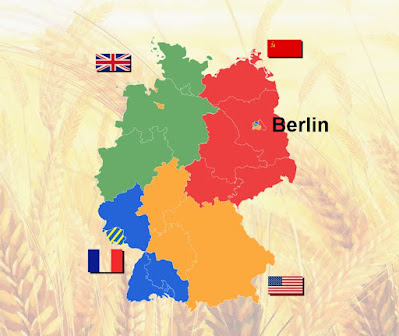February 18, 2022
On April 6, after more than three months of repairs, Trinidad prepared to leave the island of Tidore. The ship carried a full load of spices – fifty tons of cloves – more than enough to justify the expense of the entire voyage.
In one of the worst decisions in the history of navigation, Trinidad, under the command of Gonzalo Espinosa, decided to sail east. Five months later, with his crew starving, he returned to the Moluccas, only to find a fleet of seven Portugese ships on station, all looking for Magellan and the Armada de Molucca.
Espinosa begged sympathy. His ship was in bad condition. One storm could send her to the bottom. And he was in desperate need of supplies.
Portuguese soldiers boarded and took possession of Trinidad’s papers, including Magellan’s personal logbook. They imprisoned Espinosa and his surviving crew in a Portugese fort, determined to leave them to die in their harsh surroundings.
Trinidad rode helplessly at anchor until a severe storm hit the island and smashed the ship. Her precious cargo of cloves sank, and the flagship of the Armada de Molucca ended up as driftwood.
Now there was only one ship left of the five comprising the original Armada de Molucca. This was Victoria, and her prospects of returning to Seville appeared even less certain than Trinidad’s.
On June 8, 1522, Victoria crossed the equator again. Pigafetta reported that scurvy had returned to devastate the crew. “Twenty-one men died during that short time.”
On July 9, they reached Cape Verde off the coast of West Africa. The islands were a Portuguese stronghold. Despite the fact that they were a Spanish ship in Portugese waters, Espinosa dispatched a longboat for food needed by the starving crew.
Their cover story omitted any mention of their visit to the Spice Islands, the precious cloves they were carrying, Magellan’s death, and, most important of all, their nearly complete circumnavigation of the globe. They posed as an unlucky, storm-battered Spanish cargo ship, hardly worth troubling over. The ruse worked, and Pigafetta exulted, “We got two boatloads of rice.”
It has never been determined how it happened, but before Victoria could sail away from Santiago Island, their cover story unraveled, and several crew members were taken prisoner. Not risking the loss of their boat and the capture of the rest of the men, Victoria set full sails, and left with 22 men – all that remained of the 257 who had left Seville three years earlier.
On Saturday, September 6, 1522, they entered the bay of San Lucar with only 18 men, the majority of them sick.
Pigafetta wrote: “From the time we left that bay until the present day, we sailed 14,460 leagues” – nearly 60,000 miles – “and completed the circumnavigation of the world from east to west.” The distance the Armada traveled was fifteen times longer than that covered by Columbus’s first voyage to the New World, and correspondingly more dangerous.
Victoria tied up in Seville on September 10, 1522.
Under the scrutiny of representatives of the king, dock workers unloaded the precious cargo that Victoria had traveled around the world to collect: cloves. Even without the other four ships, the amount of cloves in Victoria’s hold was sufficient to turn a profit for the expedition’s backers. Their value came to $1 million.
The completion of Magellan’s voyage gave the Spanish a water route to the Spice Islands. In terms of prestige and political might, the achievement was the Renaissance equivalent of winning the space race – a competition between the world’s two great superpowers, Spain and Portugal, for territory of vital economic and political importance. Spain was poised to control the spice trade and, by extension, global commerce.
 |
| Ferdinand Magellan |
Not until 1580, fifty-eight years after Victoria returned to Seville, did another explorer, Sir Francis Drake, complete a circumnavigation. His voyage took him through the Strait of Magellan, relying on the knowledge acquired by Magellan and his crew.
 |
| Sir Francis Drake |
Victoria, the first ship to complete a circumnavigation, had a curious epilogue. She was repaired, sold to a merchant for $12,000 and returned to service, a workhorse of the Spanish conquest of the Americas. As late as 1570, she was still plying the Atlantic. En route to Seville from the Antilles, she disappeared without a trace; all hands on board were lost.
 |
| Victoria |
Flemish cartographer, Gerardus Mercator, canonized the Strait of Magellan on his famous globe in 1536. The name Magellan designated only the strait – no lands or territories that he once dreamed of leaving to his heirs.
 |
| Gerardus Mercator |
On Sunday, September 7, 1522, the day after arriving in Seville, the 18 survivors, attired only in their ragged shirts and breeches, did penance at the shrine of Santa Maria de la Victoria. They returned to Seville as sinners and penitents rather than conquerors.
In a bustling square in Sanlucar de Barrameda, there is today a marble plaque mounted high on the stone facade of a well-worn building. The tarnished inscription commemorates the 18 survivors of the first-ever circumnavigation of the world:
 |
Juan Sebastian Elcano, Captain. Francisco Albo, Pilot. Miguel de Rodas, Master. Juan de Acuno, Boatswain. Martin de Judicibus, Sailor. Hernando Bustamente, Barber. Hans of Aachen, Gunner. Diego Carmona, Sailor. Nicholas the Greek, of Naples, Sailor. Miguel Sanchez, of Rodas, Sailor. Francisco Rodrigues, Sailor. Juan Rodriguez de Huelva, Sailor. Antonio Hernandez Colmenero, Sailor. Juan de Arratia, Sailor. Juan de Santandres, Ordinary seaman. Vasco Gomes Gallego, Ordinary seaman. Juan de Zubileta, Page. Antonio Pigafetta, Passenger. |
They had surveyed more of the world than anyone else before them; by accident or design, their names belong among history’s great explorers.
They had circled the globe, demonstrating that the world was a larger place than previously imagined. 7,000 miles had been added to the globe’s circumference. They had learned that beyond Europe, people existed in astonishing profusion and variety. Banished were phenomena such as mermaids, boiling water at the equator, and a magnetic island capable of pulling the nails from passing ships. These discoveries came at the cost of over 200 lives. No other voyage had been as prolonged, complicated, ambitious, or daring as this one.
The expedition of the Armada de Molucca had ended, but its effects on Spain, and on world history, were just beginning.
Next week, a story from my series “The Creators.”
🛐 Today’s close is from Praying with the Psalms by Eugene H. Peterson.
“The Lord is my light and my salvation; whom shall I fear? The Lord is the stronghold of my life; of whom shall I be afraid?” (Psalm 27:1).
Fear responds to danger by burying us beneath thick layers of self-defense, where we can only cower in shadows. Faith responds to danger by trusting God and lives head high out in the open with shouts of joy.
Prayer: I refuse, O God, to live fearfully or cautiously. I name my fears one by one and turn them over to you, and find them simply trivial when set alongside your majesty. With lifted head I will live in your light and salvation, through Jesus Christ. Amen.
-30-
































































